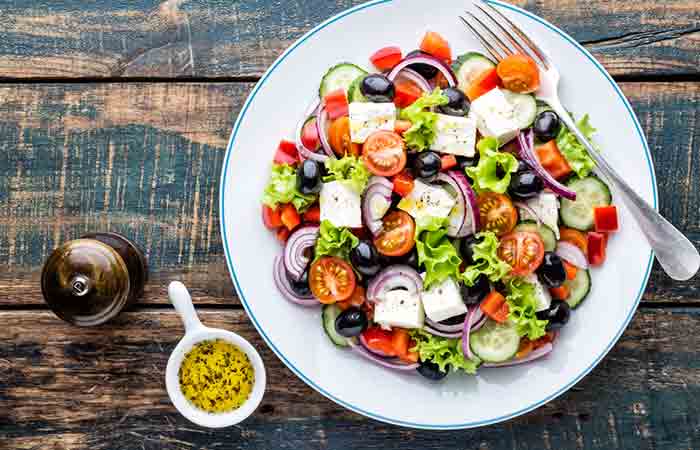Are you tired of endless diets that promise weight loss but never deliver? Look no further than the keto diet.
This high-fat, low-carb approach has taken the health and fitness world by storm, with countless success stories of individuals shedding pounds and achieving their ideal body composition. But where do you start?
Fear not – this ultimate guide to losing weight with the keto diet will provide all the information and tips you need to embark on your transformative journey towards a healthier, happier version of yourself. Get ready to say goodbye to fad diets and hello to sustainable results!
What is the keto diet?
The keto diet is a low-carb, high-fat diet proven to help people lose weight. On the keto diet, you eat mostly fat and very few carbs.
This allows your body to use stored fat for energy instead of carbs, which helps you lose weight. The keto diet also helps reduce inflammation and improves blood sugar levels.
Types of keto diets
There are many types of keto diets, each with its benefits and drawbacks.
The classic keto diet is a high-fat, low-carbohydrate diet that was first developed in the 1920s to help patients with epilepsy. It’s since been popularized as a way to lose weight and improve your health.
The keto diet works by resetting your body’s metabolism to burn fat instead of carbs. This means you won’t experience the sugar cravings and unhealthy spikes in blood sugar that often come with regularly eating processed foods.
The modified keto diet is a more flexible version of the classic keto diet that lets you eat some carbs and still achieve results.
On the modified keto diet, you can eat up to 50 grams of net carbs daily, about 20 to 50 percent of your daily caloric intake.
This allows you to maintain some level of insulin sensitivity, which may help reduce your risk for diabetes and other chronic diseases.
The high-fat, low-carbohydrate ketogenic diet is a strict version of the classic keto diet, allowing only 75 grams or less of net carbs per day.
This is designed to help people with epilepsy control their seizures while promoting weight loss.
The high-fat, low-carbohydrate ketogenic diet is not recommended for people who are not struggling with their weight or have other medical conditions that require them to follow a rigorous dietary regimen.
The modified low-carbohydrate ketogenic diet is a less strict version of the classic keto diet, allowing up to 25 grams of net carbs daily.
This is designed for people who want to maintain their weight but also enjoy some carbs. On the modified low-carbohydrate ketogenic diet, you can still eat foods with natural sugar, such as fruits and vegetables, while also earning the benefits of the keto diet, such as reduced inflammation and improved overall health.
Pros and Cons of a keto diet
The ketogenic diet, or “keto” for short, is a low-carbohydrate, high-fat diet effective for weight loss. While there are many benefits to following a keto diet, there are also some potential drawbacks. Here’s a look at the pros and cons of this popular weight loss strategy.
PRO: The keto diet is highly effective for weight loss. In studies comparing people on keto vs. other diets, almost everyone who switched to keto lost weight and experienced improvements in their blood lipid levels (1). For example, in one study of obese women following a keto diet for 12 weeks, those who maintained weight lost more body fat than those who didn’t (2).
CON: It can be challenging to stick with a keto diet long-term. Many people struggle to avoid food cravings while restricting carbs and protein. This can lead to overeating and weight regain after falling off the diet (3). Additionally, many people find getting enough vitamins and minerals on a keto diet challenging because these nutrients are typically found in whole foods rather than processed supplements (4). Fortunately, you can supplement your keto diet without over-the-counter supplements.
PRO: The ketogenic diet is relatively easy to follow. You don’t need to be a nutrition expert to stick with it. You only need simple recipes and a kitchen scale to measure food quantities.
CON: The keto diet is not suitable for everyone. If you’re struggling with weight issues, you may not be able to follow a keto diet successfully. Additionally, people with kidney or liver problems should avoid the keto diet because it can harm their health (5).
How does the keto diet work?
The keto diet is a high-fat, low-carbohydrate diet effective for weight loss. It turns the body into a “ketone burner,” meaning it uses fat instead of glucose as its primary energy source.
When you eat foods containing carbohydrates, your body converts these into glucose. Glucose is then used for energy by the body and brain.
On a keto diet, all carbs are replaced with ketones, which the body can use for fuel. This results in weight loss because the body no longer needs to find and use stored fat.
The keto diet has many benefits, including:
1) It’s easy to follow – avoid all grains, sugar, and processed foods, and you’re good to go.
2) It can help you lose weight fast – studies show that people who follow a keto diet can lose more weight than those who don’t within six weeks.
3) It’s not dangerous – unlike other restrictive diets like Atkins or South Beach Diet, there is no need to calorie-restrict on a keto diet. You can eat as much as you want! However, if you do start overeating sugar or unhealthy fats, make sure to adjust your calories accordingly so that you still maintain your goal weight.
4) It’s good for your overall health – a recent study found that people who follow a keto diet are less likely to suffer from heart disease, stroke, or other chronic diseases.
5) It can be a great way to feed your sweet tooth – many keto foods are high in healthy fats and low in sugar, making them an excellent option for those who want to reduce their sugar intake.
What foods are good to eat on a keto diet?
There are many great foods to eat on a keto diet, as long as you’re mindful of your macros and track what’s going into your body. Here are a few ideas:
1. Fatty meats and full-fat dairy products – These are the perfect sources of healthy fats and protein, which can help you stay satiated and maintain your energy levels throughout the day.
2. Low-carb vegetables – Vegetables are a great way to add more fiber, vitamins, and minerals to your diet while staying low in carbs. Try steamed or boiled vegetables, quinoa salads, or roasted Brussels sprouts.
3. High-fat foods – High-fat foods that are great for keto include avocados, nuts, seeds, olives, fatty fish like salmon, macadamia nuts, and coconut oil. Just make sure you’re picking items with a low carbohydrate content so your overall net carb intake remains low.
4. Low-carb beverages – Beverages like water, unsweetened tea, sparkling water, or even coffee can be enjoyed without worrying about adding unnecessary carbs to your diet. Just be sure to avoid sweetened drinks and alcohol altogether if you’re trying to stick to a keto diet plan!
Recipes for a keto diet
You have plenty of options if you want to follow a keto diet. Some people prefer a more restrictive diet, while others prefer more freedom regarding food choices. Regardless of your preferences, several recipes will help you make the keto diet work for you.
One of the most popular keto diets is the high-fat, low-carbohydrate approach. This diet allows for moderate amounts of protein and carbs, with most calories from fat. When following this type of diet, it’s essential to make sure that your food choices fit within the guidelines set forth by the keto diet.
Some of the best recipes for a keto diet include:
• Keto chicken enchiladas: This dish is made with shredded chicken breast wrapped in tortillas and filled with melted cheese and enchilada sauce. It’s perfect for a quick and easy meal for adults and children.
• Keto green bean casserole: This recipe is made with frozen green beans cooked in cream, seasoned breadcrumbs, and Parmesan cheese. It’s an easy dish to enjoy as a main course or as part of a mealworm buffet menu.
• Keto chili: This recipe is made with ground beef, kidney beans, onions, garlic, tomatoes, and spices simmered
How to adjust the keto diet for your individual needs
If you’re finding it challenging to stick to the keto diet, you can make a few adjustments that will help you stay on track.
First, make sure to adjust your macros. When you first start keto, your body is in a state of ketosis, which means your metabolism is running on fat instead of sugar.
This process can take some time to get used to and may result in cravings for carbs and sugar. To help combat this:
- Adjust your macros so that you still get most of your calories from fat.
- Try making minor changes to your diet rather than overhauling everything at once. If you’re eating more carbs than you’d like, try cutting them out for one week and see how you feel.
- If you find that fats are giving you problems, experiment with adding more healthy fats to your diet instead.
- Be patient!
It can take up to three months for your body to completely adapt to the keto diet.
Conclusion
If you want to lose weight with the ketogenic diet, this is the ultimate guide for you. This article will discuss everything you need to know to get started and see results.
We will also provide tips on making the keto diet work for you so that you can achieve your goals without any fuss.
If you want to learn more about the ketogenic diet and how it can help you lose weight, read on!


